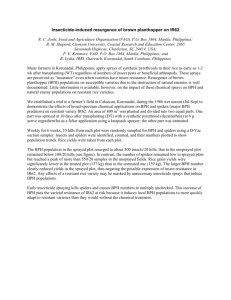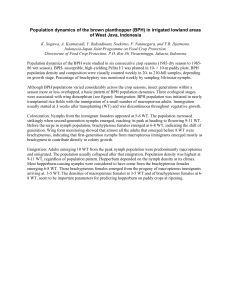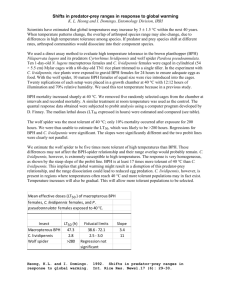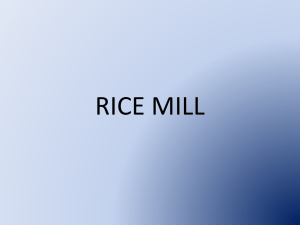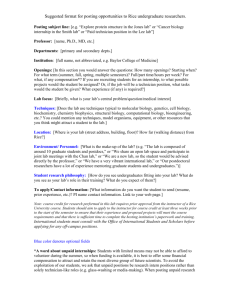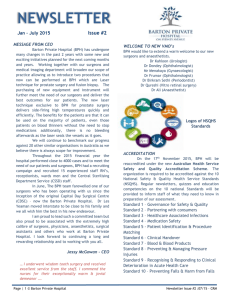Brown planthopper food web
advertisement
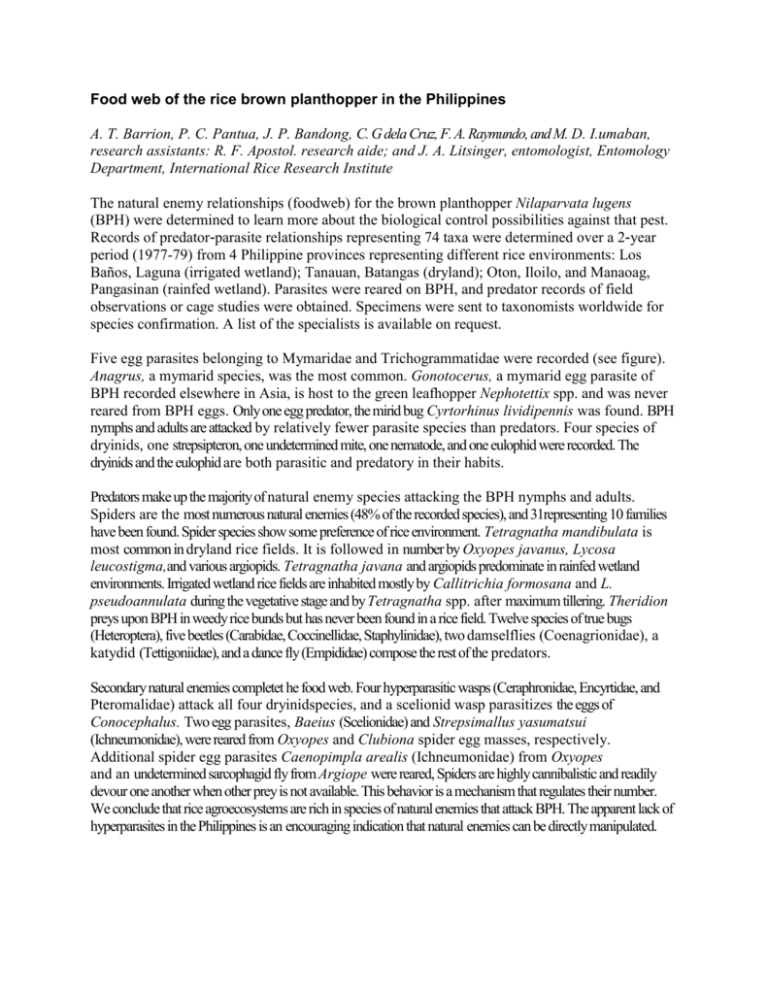
Food web of the rice brown planthopper in the Philippines A. T. Barrion, P. C. Pantua, J. P. Bandong, C. G dela Cruz, F. A. Raymundo, and M. D. I.umaban, research assistants: R. F. Apostol. research aide; and J. A. Litsinger, entomologist, Entomology Department, International Rice Research Institute The natural enemy relationships (foodweb) for the brown planthopper Nilaparvata lugens (BPH) were determined to learn more about the biological control possibilities against that pest. Records of predator-parasite relationships representing 74 taxa were determined over a 2-year period (1977-79) from 4 Philippine provinces representing different rice environments: Los Baños, Laguna (irrigated wetland); Tanauan, Batangas (dryland); Oton, Iloilo, and Manaoag, Pangasinan (rainfed wetland). Parasites were reared on BPH, and predator records of field observations or cage studies were obtained. Specimens were sent to taxonomists worldwide for species confirmation. A list of the specialists is available on request. Five egg parasites belonging to Mymaridae and Trichogrammatidae were recorded (see figure). Anagrus, a mymarid species, was the most common. Gonotocerus, a mymarid egg parasite of BPH recorded elsewhere in Asia, is host to the green leafhopper Nephotettix spp. and was never reared from BPH eggs. Only one egg predator, the mirid bug Cyrtorhinus lividipennis was found. BPH nymphs and adults are attacked by relatively fewer parasite species than predators. Four species of dryinids, one strepsipteron, one undetermined mite, one nematode, and one eulophid were recorded. The dryinids and the eulophid are both parasitic and predatory in their habits. Predators make up the majority of natural enemy species attacking the BPH nymphs and adults. Spiders are the most numerous natural enemies (48% of the recorded species), and 31representing 10 families have been found. Spider species show some preference of rice environment. Tetragnatha mandibulata is most common in dryland rice fields. It is followed in number by Oxyopes javanus, Lycosa leucostigma,and various argiopids. Tetragnatha javana and argiopids predominate in rainfed wetland environments. Irrigated wetland rice fields are inhabited mostly by Callitrichia formosana and L. pseudoannulata during the vegetative stage and by Tetragnatha spp. after maximum tillering. Theridion preys upon BPH in weedy rice bunds but has never been found in a rice field. Twelve species of true bugs (Heteroptera), five beetles (Carabidae, Coccinellidae, Staphylinidae), two damselflies (Coenagrionidae), a katydid (Tettigoniidae), and a dance fly (Empididae) compose the rest of the predators. Secondary natural enemies completet he food web. Four hyperparasitic wasps (Ceraphronidae, Encyrtidae, and Pteromalidae) attack all four dryinidspecies, and a scelionid wasp parasitizes the eggs of Conocephalus. Two egg parasites, Baeius (Scelionidae) and Strepsimallus yasumatsui (Ichneumonidae), were reared from Oxyopes and Clubiona spider egg masses, respectively. Additional spider egg parasites Caenopimpla arealis (Ichneumonidae) from Oxyopes and an undetermined sarcophagid fly from Argiope were reared, Spiders are highly cannibalistic and readily devour one another when other prey is not available. This behavior is a mechanism that regulates their number. We conclude that rice agroecosystems are rich in species of natural enemies that attack BPH. The apparent lack of hyperparasites in the Philippines is an encouraging indication that natural enemies can be directly manipulated. Food web of the rice brown planthopper in the Philippines. International Rice Research Newsletter 1981 Volume 6 No. 1 pages 13-15
